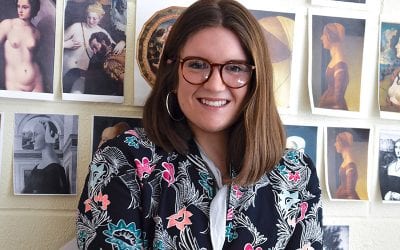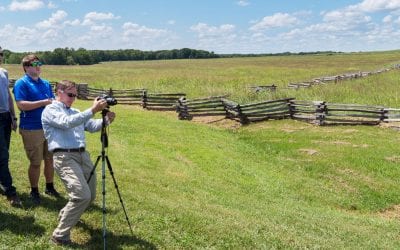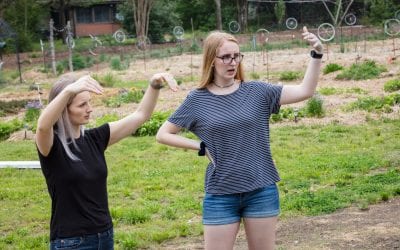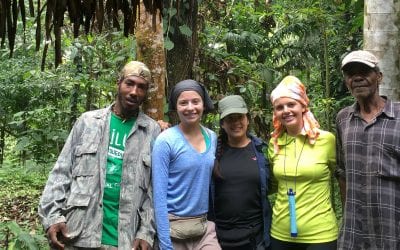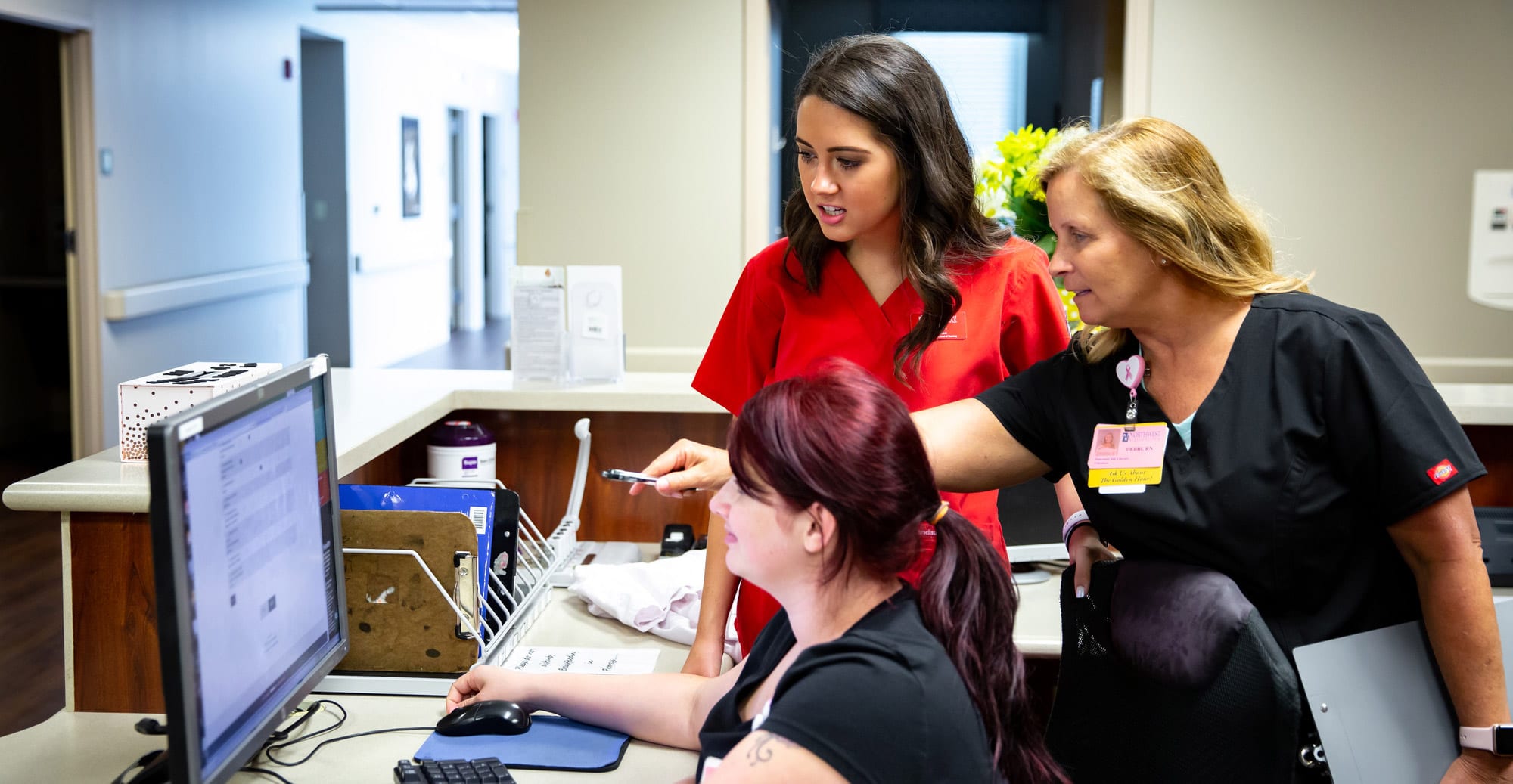
“I feel like more of an advocate for the Marshallese now. If other students in my rotation mention they have a Marshallese patient, I am able to educate them on their potential special needs.”
A Champion for Cultural Competency
By Katie Wilson
Photos: Whit Pruitt
 Marshall Islanders have moved from a culture where the sick consult healers and pastors into health care marked by waiting rooms, co-pays, and often complicated jargon. Many people in Northwest Arkansas pass them in the grocery store, at a bus stop, or in a doctor’s office, but never truly understand who they are and where they have come from.
Marshall Islanders have moved from a culture where the sick consult healers and pastors into health care marked by waiting rooms, co-pays, and often complicated jargon. Many people in Northwest Arkansas pass them in the grocery store, at a bus stop, or in a doctor’s office, but never truly understand who they are and where they have come from.
Due to U.S. nuclear testing in the Marshall Islands in the 1950s and the creation of the Compact of Free Association in exchange for military base access, Marshall Islanders continue to be one of the fastest-growing migrant populations in the United States. Further, Northwest Arkansas now numbers the second-largest Marshallese population in the U.S. With a major language barrier and countless cultural differences, it can be difficult for health care providers to know how best to help this growing and misunderstood population.
“Marshall Islanders don’t really see being sick as something that you need to come to the hospital for,” says Abby Childers, a senior in the Eleanor Mann School of Nursing. “There are women who come into the hospital literally pushing out a baby.” Childers is studying the Marshallese and the cultural competencies of nurses who work with them. For her honors thesis, she created an educational video and shared it with staff at Willow Creek Women’s Hospital in nearby Johnson. Staff members also filled out a questionnaire before and after watching the video so that Childers could evaluate the effectiveness of the intervention.
The Marshall Islanders’ lack of experience with preventive care is particularly problematic given that many suffer from chronic conditions such as diabetes, heart disease and obesity. Health care professionals often rely on a translation service when working with these patients, making it difficult to build trust. Cultural values and traditions further complicate matters. For example, the Marshallese don’t work on standard “clock time,” making health care appointments difficult to maintain.
As with Americans, the Marshallese also have “cultural quirks” that Childers shared with nurses. Rolling a raw egg across a pregnant woman’s belly is thought to speed up labor, while putting a piece of paper between a baby’s brows will get rid of hiccups. Childers was able to gain this information by interviewing three generous Marshallese women about the differences they’ve witnessed in adjusting to life in America, and the advice they might give to nurses.
The women told Childers that they did not like the limit that American hospitals place on family members who can be in the room during labor and birth. Additionally, they wanted health care professionals to know that most Marshallese trust a doctor’s word explicitly and will not ask follow-up questions out of respect. Despite these differences, they liked the way the babies were treated, as well as the training of the doctors.
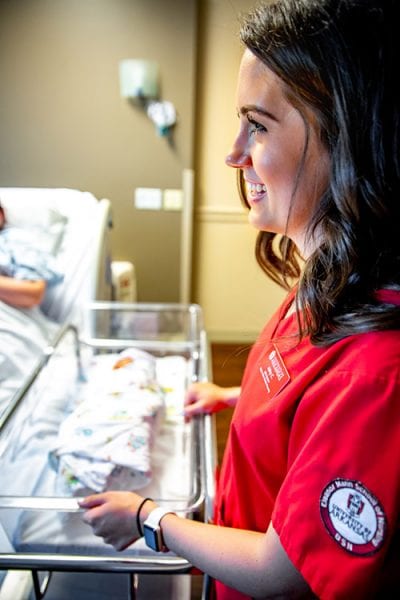
Abby Childers at Willow Creek Women’s Hospital.
These insights, as well as research guided by faculty mentor Allison Scott, assistant professor of nursing, informed the nine-minute video Childers developed for the nurses. “I wanted to do something that was going to be very engaging” she says. “I really liked the graphic design side of it because I’m so used to focusing on scientific methods and strategies. It pushed me out of my comfort zone, but it felt really good.” Childers packs a lot into nine minutes, from the history of nuclear testing in the Marshall Islands to tips for nurses caring for this special population.
Hospital staff completed a Clinical Cultural Competency Questionnaire before and after watching the video, answering questions about their comfort in cross-cultural situations and their training experiences in cultural diversity. Preliminary data indicates that her video did expand the nurses’ awareness of Marshallese culture and needs and that it provided helpful tools for nursing and health care practices. Childers would like to see other hospitals adapt this training for their staffs.
Childers is already using what she’s learned in her work in clinical rotations. “I feel like more of an advocate for the Marshallese now. If other students in my rotation mention they have a Marshallese patient, I am able to educate them on their potential special needs.” She expanded her understanding of different cultures by studying public health in Ghana last summer.
“Even though I might not necessarily end up working with Marshallese, having such a strong awareness of cultural competency will always be incorporated into my practice. Keeping everyone’s eyes open and realizing that different cultures require different ways of caring will be a priority for me as a future nurse.”
Childers’ research and study abroad were supported by a SURF grant and Honors College Study Abroad grant.
More Field Notes Stories
Reading Renaissance Portraits
Clio Rom links Petrarch’s poetry with static, idealized profile portraits. Neoplatonic philosopher Marsilio Ficino, who believed that looking into a woman’s eyes could inspire a divine frenzy, may have prompted the shift to three-quarter views. Here, Rom walks us through three portraits that signify a sea change in Renaissance art, literature and philosophy.
Civil War Meets Mid-Century Modern
Built in 1956 as part of the “Mission 66” federal initiative to modernize national parks, the overlook at Pea Ridge Military Park affords stunning views of a battlefield where the Union army won a decisive victory over Confederate forces. But the mid-century modern structure, still pleasing to 21st-century tastes, landed on a historically sensitive site.
Hydroponic Profits
Honors students Sarah Gould and Laura Gray stand between two wooden stakes embedded in the ground at local community garden Tri Cycle Farms. Today the empty space holds a vision: a greenhouse for hydroponically grown vegetables that will generate profits, and a sustainable future, for the farm. Gould and Gray’s honors theses in biological engineering will help transform this vision into reality.
Market Entry Masala
Nine cities. 14 days. 23 meetings. It’s an eye-popping schedule, but for accounting and finance major Grayson Greer, it was a bold way to jump-start research on his honors thesis. He designed the two-week trip to India himself, intent on identifying a unified strategy for entering the Indian food and beverage market.
Queens of the Jungle
Senior honors students Kelsey Johnson and Mersady Redding were traipsing through the Belizean jungle one day when they heard low grunts nearby. Stooping down, hoping for a sighting of wild pigs, the two women and their three guides suddenly fell victim to an onslaught of sticks hurled at them from above.


